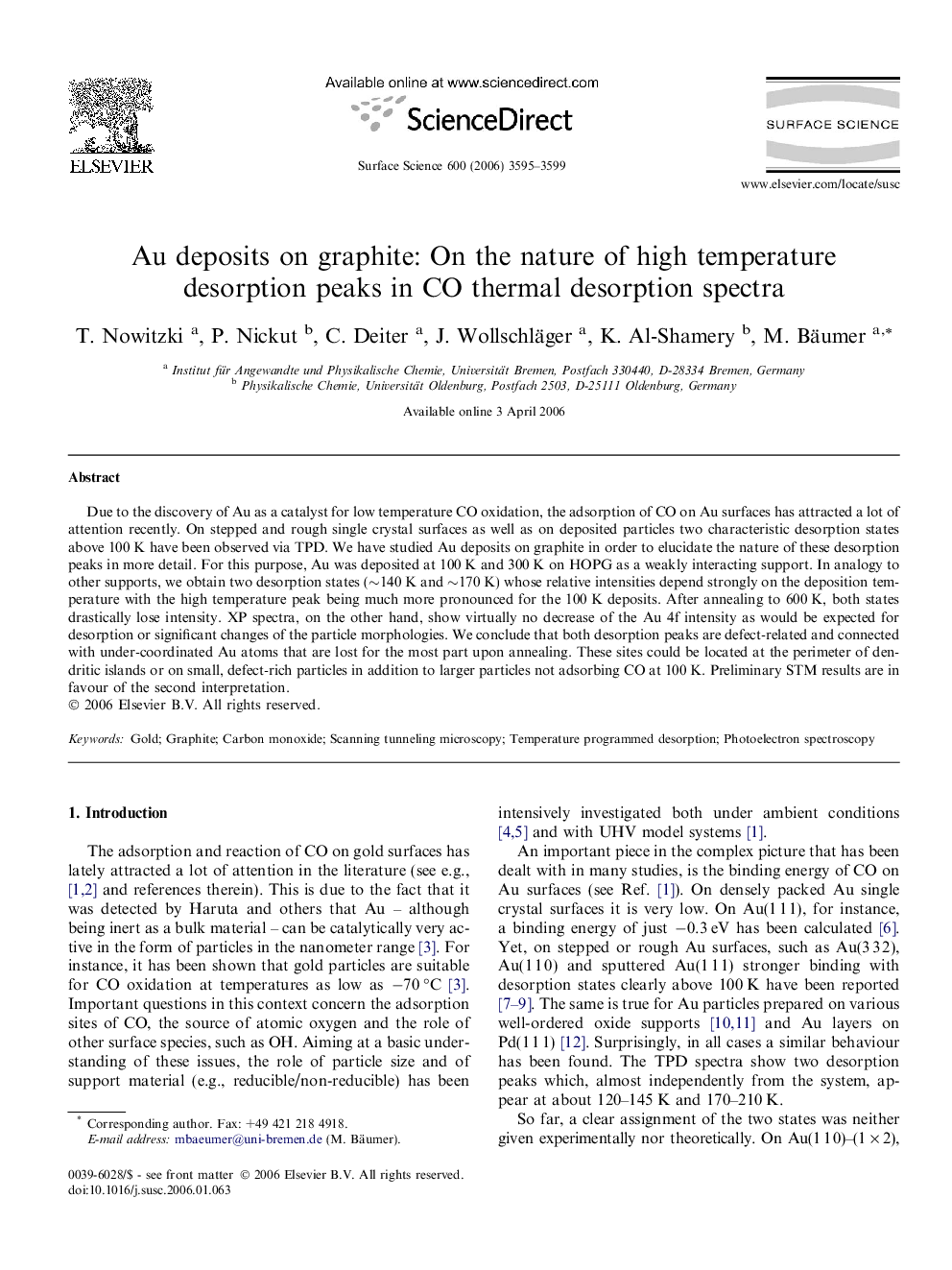| Article ID | Journal | Published Year | Pages | File Type |
|---|---|---|---|---|
| 5426388 | Surface Science | 2006 | 5 Pages |
Due to the discovery of Au as a catalyst for low temperature CO oxidation, the adsorption of CO on Au surfaces has attracted a lot of attention recently. On stepped and rough single crystal surfaces as well as on deposited particles two characteristic desorption states above 100Â K have been observed via TPD. We have studied Au deposits on graphite in order to elucidate the nature of these desorption peaks in more detail. For this purpose, Au was deposited at 100Â K and 300Â K on HOPG as a weakly interacting support. In analogy to other supports, we obtain two desorption states (â¼140Â K and â¼170Â K) whose relative intensities depend strongly on the deposition temperature with the high temperature peak being much more pronounced for the 100Â K deposits. After annealing to 600Â K, both states drastically lose intensity. XP spectra, on the other hand, show virtually no decrease of the Au 4f intensity as would be expected for desorption or significant changes of the particle morphologies. We conclude that both desorption peaks are defect-related and connected with under-coordinated Au atoms that are lost for the most part upon annealing. These sites could be located at the perimeter of dendritic islands or on small, defect-rich particles in addition to larger particles not adsorbing CO at 100Â K. Preliminary STM results are in favour of the second interpretation.
